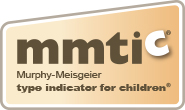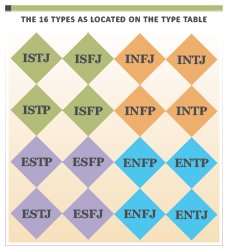Personality Type and Social Emotional Learning: Relationship Skills (SEL Series – Part 5)
Yvonne Nelson-Reid is a master practitioner for the Myers-Briggs Type Indicator® (MBTI®) instrument and a practitioner for the Murphy-Meisgeier Type Indicator for Children® (MMTIC®) assessment, who has been helping individuals, families, and children understand themselves better for over 25 years. In the fifth article of this series, Yvonne integrates her years of experience as an educator with her expertise in personality type to explore connections between type and Social Emotional Learning (SEL). New to Type? Click here!
In part one of this series, Personality Type and Social Emotional Learning (SEL), I explained SEL as defined by the Collaborative of Academic, Social, and Emotional Learning (CASEL) organization. Furthermore, I suggested that SEL teaches an awareness of what we need to know for healthy development and learning personality type teaches how individuals go about doing so based on their natural styles. They go hand in hand. Personality type aligns with and strengthens SEL.
How does learning about personality type support the five core competencies of SEL? In parts two, three, and four of this series, I demonstrated the connection between type and the SEL competencies of Self-Awareness, Self-Management, and Responsible Decision-Making respectively. Now, I turn to Relationship Skills.
Relationship Skills
CASEL defines Relationship Skills as: "The abilities to establish and maintain healthy and supportive relationships and to effectively navigate settings with diverse individuals and groups. This includes the capacities to communicate clearly, listen actively, cooperate, work collaboratively to problem solve with differing social and cultural demands and opportunities, provide leadership, and seek or offer help when needed."1
Communication and active listening are essential skills towards building healthy relationships. Personality type awareness offers a pathway towards understanding, appreciating, and learning to accommodate communication style differences. Even as adults, however, communication can be hindered by a lack of self-awareness, other-awareness, fear of conflict, and the inability to see beyond our own perspective. How then, do we support young people, who are still developing their type preferences, to better communicate with their peers, teachers, and families? From a typological perspective, what Relationship Skills are needed to improve communication?
Support begins with awareness of the strengths and stretches of all types. Through type learning, a child can begin to unpack and identify their type preferences. Once the child, and the adults in their life, recognize and acknowledge the young person's type they can then build upon the relationship skills necessary for better communication. When young people identify their natural type preferences, they become aware of their personality strengths as well as the parts of their personality that might be harder to access, their stretches or opposite preferences.
There are strengths and stretches with communication styles, too. People who prefer Extraversion like to think out loud and talk things over, whereas people with an Introversion preference tend to think things through first so may appear quiet. The Sensing preference is all about the facts based on current realities, whereas the Intuition preference reflects imagination and a future-focused approach to taking in information and being open to multiple possibilities. With a Thinking preference, people tend to be analytical and logical, unlike those who prefer Feeling who take a more empathetic view in support of values through nurturance and harmony. A preference for Judging leads to quick decisions and a need to get it done, whereas people who prefer Perceiving are more flexible and adaptable and typically wait to see what options are available. For young people a lack of self-awareness due to development can lead to one-sided communication. In other words, "My way is the only way." This can lead to conflict and misunderstandings. For example, a child who prefers Extraversion may talk over people or shout out answers in the classroom. On the other hand, a child who prefers Introversion may not seem interested or engaged in the conversation when taking time to process before responding.
Communication involves both taking in information (Perceiving) and deciding on a response (Judging) which utilizes the mental process pairs (Sensing-Intuition, Thinking-Feeling). So far, I have described in brief the communication style typical for each individual preference. However, when in combination, a new dynamic emerges. With Sensing and Thinking preferences (ST), people tend to like "straight to the point" conversation wanting the "bottom-line" rather than small talk. The focus is on facts and details handled through objective, logical analysis. For those who prefer Sensing and Feeling (SF), communication is all about how to help everyone in the here and now. They focus on facts and details, too, but handle them with genuine concern for others through being warm and friendly. When Intuition is combined with Feeling (NF), people see potential in the development of others. They focus on possibilities and how they can help people become their best self. Lastly, Intuition and Thinking preferences (NT) produce creative problem solvers who see new ways to improve systems. They focus on possibilities, too, but rather than apply these to people, they apply them to systems and theoretical concepts.
Learning about communication differences for each of the preference and process pairs can help young people to better know themselves and how they might be different from others. In turn, they may also better recognize and verify their own type preferences and communication style. In knowing this, they can then tell others how to better communicate with them. However, it is important to also learn how best to communicate with others using their type language. This can be challenging, especially for a young person who is still developing their natural style. Nevertheless, the more they become aware of differences and practice using their opposite preferences when a conversation warrants it, the more comfortable the stretch may become. With type awareness, accessing our opposite preferences typically gets easier with maturity. Here are some tips to get young people started:
- Stretching from Extraversion to Introversion: Allow time for processing information when communicating with someone who prefers Introversion. Pause after asking questions to give time for reflection and try not to put them on the spot; instead, set a later time to follow up. People who prefer Introversion will think through their ideas first before saying them, so when they do respond, they are often sure of their reply.
- Stretching from Introversion to Extraversion: When someone who prefers Extraversion asks a question, repeat the question, or ask for more time to think it through; if you are too quiet people who prefer Extraversion may think you are not interested in what they have to say or that they were not heard the first time. People who prefer Extraversion like to talk out their ideas (process outwardly) so where they start in a conversation might look quite different from where they end up.
- Stretching from Sensing to Intuition: Try not to give too many details, instead provide a framework or an overview of the information. Too many details and instructions feel limiting to people with an Intuition preference.
- Stretching from Intuition to Sensing: Be clear and straight to the point. Present information sequentially and avoid jumping around in the conversation. Stay focused and avoid vagueness. Not enough details can feel confusing to people who prefer Sensing.
- Stretching from Thinking to Feeling: Appeal to their desire for connection and harmony by giving positive feedback that is affirming and supportive. Consider how your communication and decisions will impact or be received by others. People who prefer Thinking tell it like it is (sometimes too directly). Softening your approach will be appreciated.
- Stretching from Feeling to Thinking: Try giving more direct feedback; sometimes those who prefer Feeling are often not direct enough. What might feel like a heated argument to you is usually just a discussion for people who prefer Thinking. Try approaching the situation objectively. Those who prefer Feeling are often worried about hurting someone's feelings or not being liked. Getting to the point, however, will be appreciated.
- Stretching from Judging to Perceiving: Work on being more flexible and try to not force a decision before those with a Perceiving preference have explored all options. People who prefer Perceiving dislike being micromanaged. They are typically pressure-prompted, keeping things open just in case something better comes along at the last minute. Too much structure is confining.
- Stretching from Perceiving to Judging: Try not to impose last minute changes. People who prefer Judging like schedules and plans and are typically early-starters, so they may feel challenged with changes or little structure. Life can feel chaotic to them without a plan.
Good type development means finding trust and comfort in using our natural personality type preferences and the ability to recognize when to stretch to our opposite preferences as appropriate to the situation which usually becomes easier with maturity. For young people who may still be unsure of their own type preferences, stretching to their opposite preferences to improve their communication is the foundation for developing healthy Relationship Skills. We can encourage recognizing, understanding, valuing, and appreciating the different ways in which we all communicate. Over time young people can learn to honor their own style first then stretch to their opposites when needed.
1."What Is Social and Emotional Learning?" What Is SEL? | CASEL District Resource Center, https://drc.casel.org/what-is-sel/.



_thumb.png)















